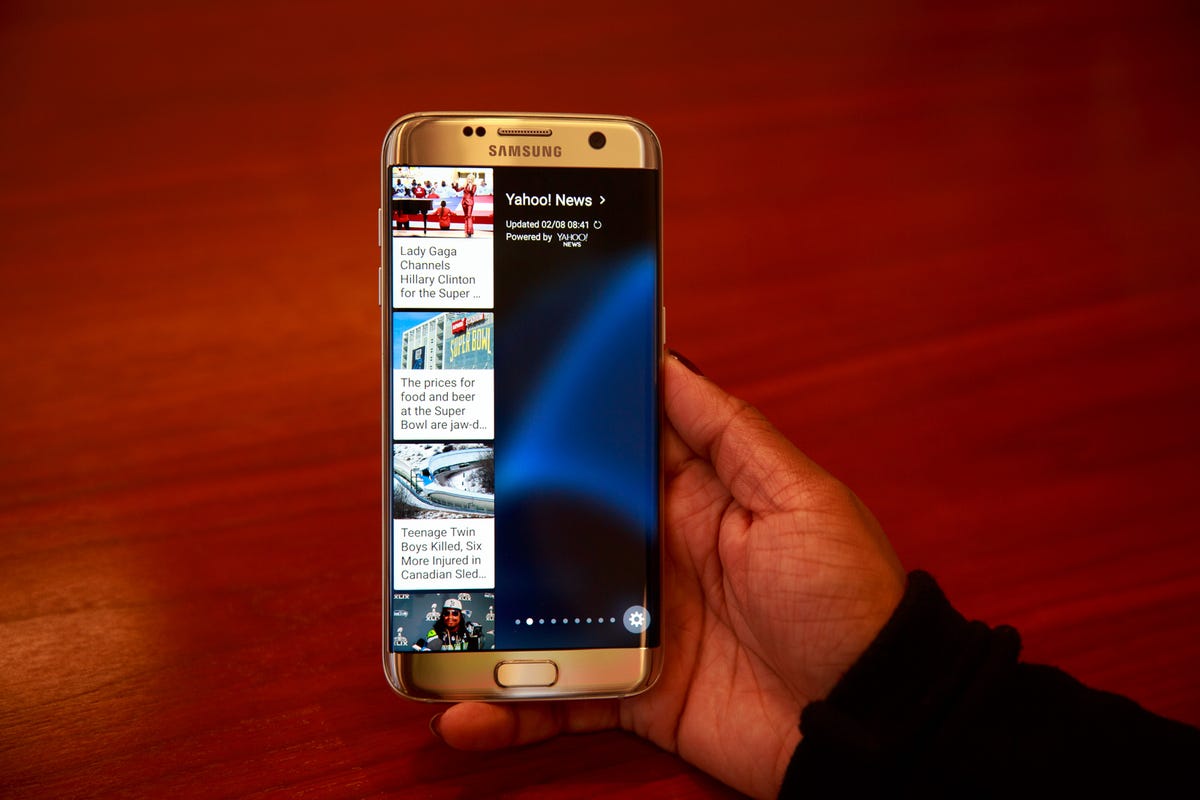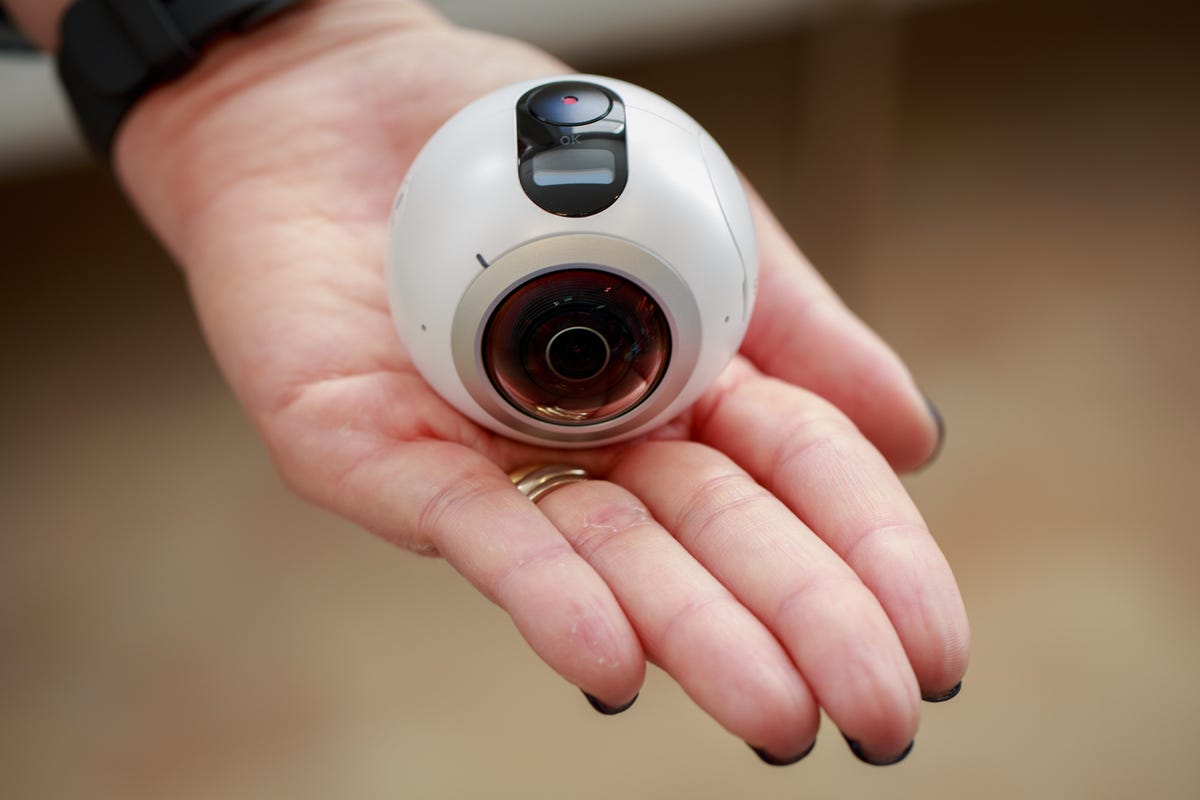

Now playing:
Watch this:
Everything from Samsung’s Unpacked event in 3 minutes
2:57
The Galaxy S7 looks familiar. But maybe that’s OK: Samsung’s latest flagship phone borrows a lot from its predecessor, and if you picked up the Galaxy S6, there might not be enough here to sway you. But the S7 brings back a few fan-favorite features that went missing the last go round.

 Enlarge Image
Enlarge ImageJosh Miller/CNET
You’ll find a microSD card slot, giving you a bit of extra room for apps and games without necessarily requiring you to pony up for a pricier model. It’s water-resistant again too.
The camera’s megapixel count is a tad lower (12 megapixels, down from 16), but Samsung says that lower total resolution makes for larger pixels, which should collect more light. Combined that with the faster f/1.7 aperture (up from f/1.9), and we should see better camera performance in low light. The Galaxy S7 also gets a faster autofocus, and the screen will flash when you’re taking a selfie, as a makeshift front-facing flash.
A sharper Edge

 Enlarge Image
Enlarge ImageJosh Miller/CNET
The larger Galaxy S7 Edge should prove a bit more interesting. It too picks up a microSD card slot, and the slightly faster 12-megapixel camera. But the Edge has a screen that curves around on both the right and left sides, offering up notifications or quick shortcuts to your favorite contacts or apps.
The new S7 Edge spruces its namesake edges up a bit, giving you new, larger icons and tabs that are easier to grab. You’ll also find support for third-party apps, so developers who are so inclined can get in on the action, too.
Both the Galaxy S7 and Galaxy S7 Edge will be available on March 11. And they’re both compatible with the excellent Samsung Gear VR headset — in fact, if you pre-order either phone, you’ll get a free Gear VR headset, too.
Your reality, in virtual reality
Virtual reality has a content problem: a relative lack of it. Devices like Samsung’s Gear 360 are here to help. It’s a ball outfitted with a pair of lenses on each side, and it captures spherical, 30-megapixel images and high-resolution 3,820×1,920-pixel videos — not quite 4K, but fairly close.

 Enlarge Image
Enlarge ImageJosh Miller/CNET
The Gear 360’s wide f/2.0 fisheye lenses each cover a 195-degree field of view. Stitch together the photos or videos you shoot on a Galaxy S7 or other supported phone, and you’ll get a 360 by 180-degree image or video to explore. You can pan around these images or videos on your smartphone or in a browser, but chances are you’ll want to check them out using a Gear VR headset, to get the full immersive experience.
And Facebook, owner of Oculus VR, is getting in on the action too. Facebook CEO Mark Zuckerberg announced the creation of a Social VR team, dedicated to improving the VR experience. That means developing new apps and resources to improve the VR-viewing experience. There’s still no word on price, but the Gear 360 should be available sometime later this year.



